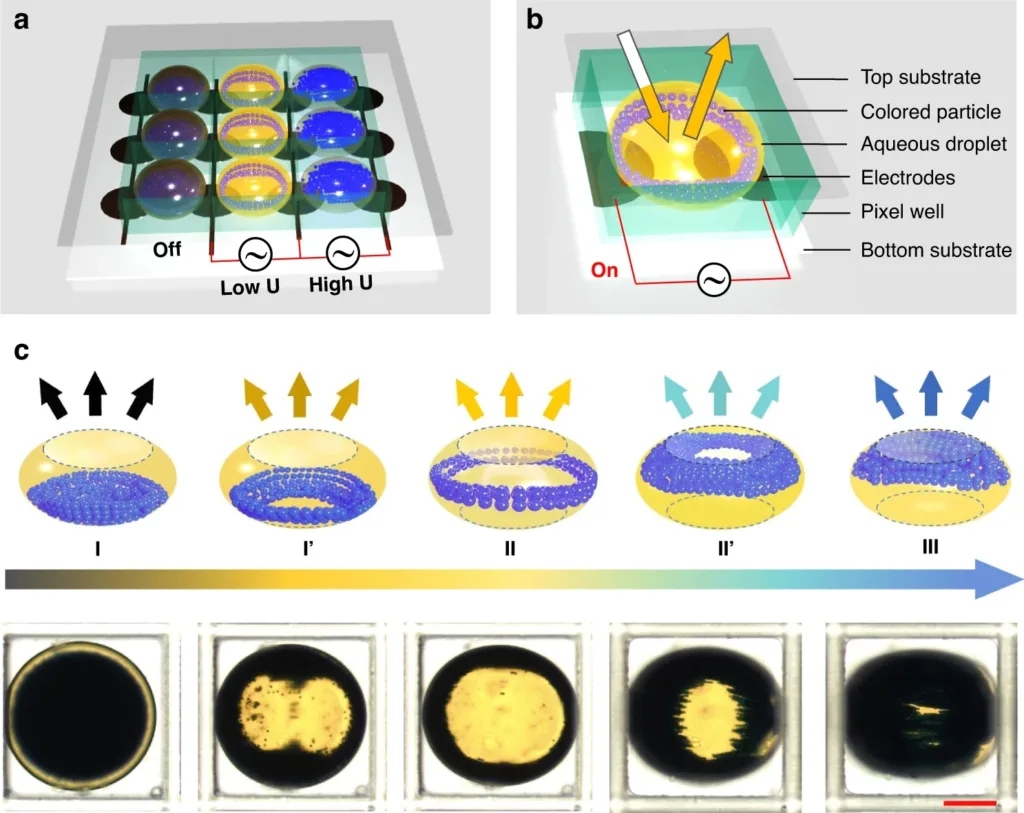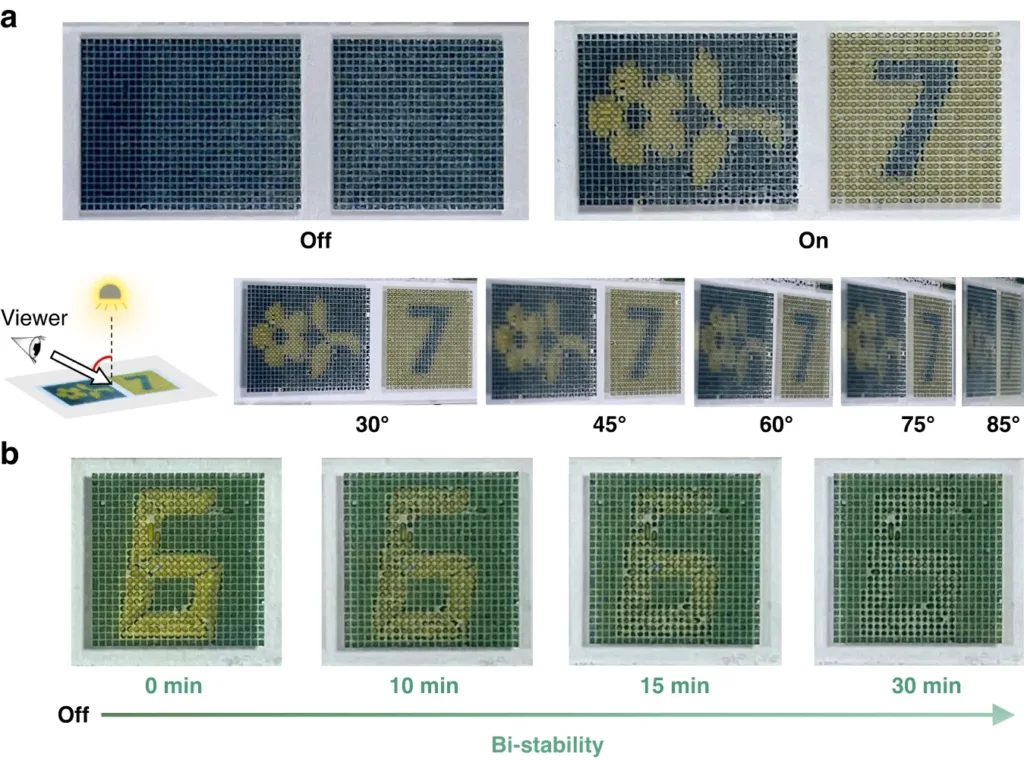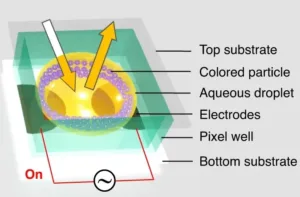Scientists have reported on a promising reflective display technology that harnesses the microfluidic assembly of light-interacting particles within liquid droplets. Their new electro-microfluidic assembly of particles (eMAP) technique shows potential for fast multi-color switching and wide viewing angle – properties essential for e-paper type devices.

Led by Professor Lingling Shui of South China Normal University, the research team encapsulates colored polymer particles inside water droplets suspended in oil. By applying electric fields, the particle structures can be dynamically controlled along the curved water-oil interface, tuning droplet light reflection and transmission. This enables distinct colors and contrasts within each droplet “pixel”.
Using optimized parameters, the scientists achieved displays with sub-0.15 second switching speeds and primary color output. Operation relied on particles subject to dielectrophoresis forces generated by the electric fields. Multi-grayscale capability arose from particle chain arrangements in the central or peripheral droplet regions. This produced the unique “light transmission” mode permitting some light passage, expanding potential display colors.
Such benefits relied on tailored components like the semi-elliptical electrodes to yield consistent field geometries across the array, and judicious fluid properties. Viewing angles reached 170 degrees and a density-matched particle/carrier system provided bistability with the power off.

“The proposed eMAP display has shown excellent fabrication compatibility, accessible materials, dynamic control and high performance,” noted the authors in the paper. “It represents an ideal candidate to develop the next generation of low-cost, energy efficient e-paper technology suited for emerging flexible display markets.”
With refinement of parameters like resolution, particle characteristics and droplet control, the fundamentals of the team’s electro-microfluidic concept could transform production and capabilities for reflective displays. The richness and versatility of images from a basic droplet/particle framework with electrical tuning suggests new inroads to e-paper engineering.
Shen, S., Feng, H., Deng, Y. et al. A reflective display based on the electro-microfluidic assembly of particles within suppressed water-in-oil droplet array. Light Sci Appl 12, 290 (2023). https://doi.org/10.1038/s41377-023-01333-w

